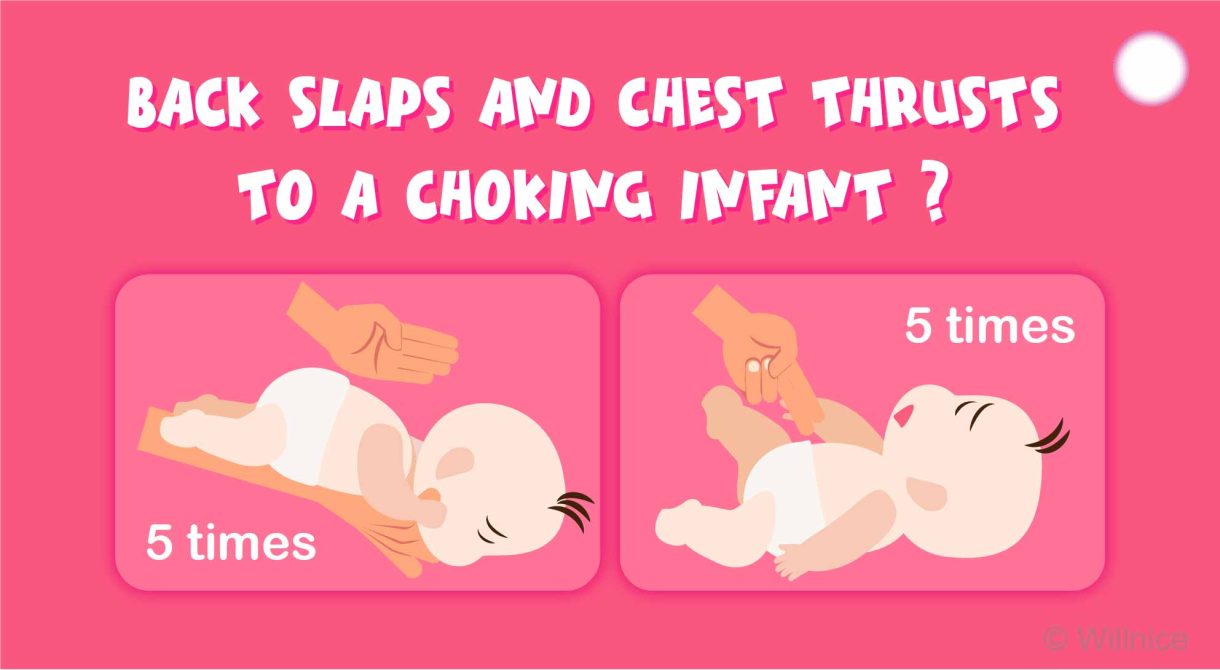
Q: How many back slaps and chest thrusts should you deliver to a choking infant?
A: You should give a choking infant 5 firm back slaps followed by 5 quick chest thrusts. Continue alternating between back slaps and chest thrusts until the obstruction is cleared, the infant can breathe, cough, or cry, or the infant becomes unresponsive.
Preface:
If a choking infant cannot cough forcefully, lacks a strong cry, or makes no sound, this could be a sign of severe airway obstruction.
While you may be aware that back slaps and chest thrusts are necessary, the specifics—how many, with what precision, and what to watch for—might not be as clear.
Our ultimate guide details each step with illustrations to help you respond effectively in a choking emergency. Continue reading to learn how to save your baby from choking.
Note: The following choking first aid techniques are suitable only for a conscious infant. If the infant is unconscious, do not perform back slaps or chest thrusts; instead, begin infant CPR immediately.
Infant Choking First Aid: A Step-by-Step Guide
Step 1: Position the Infant Correctly
- Lay the infant face down along your forearm, using your thigh or lap for support.
- Hold the infant's chest with your hand and support the jaw with your fingers.
- Tilt the infant's head downward so it is lower than the body. This position helps the dislodged object fall out more easily, using the advantage of gravity.
Step 2: Give 5 Firm Back Slaps
- Give 5 sharp, forceful back slaps between the infant’s shoulder blades using the heel of your hand to help dislodge the obstruction.
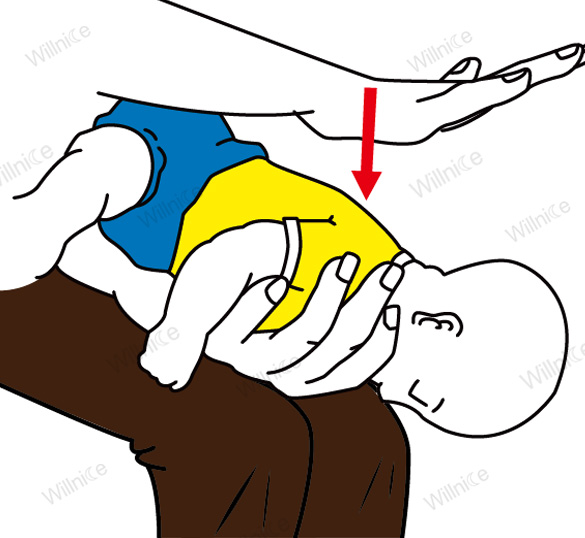
Notes:
Use Careful Force: Use sufficient force to be effective, but be cautious not to apply too much, as it could cause harm.
Avoid Manual Removal: Do not attempt to remove the obstruction with your fingers if the infant is awake and responsive.
If the blockage still remains lodged after 5 back slaps, proceed with chest thrusts.
Step 3: Reposition the Infant
- Carefully turn the infant to lie face-up on your lap or thigh. Make sure their head is lower than their chest.
- Use one hand to support the head and prevent it from tilting too far forward, which helps protect the neck.
Step 4: Give 5 Quick Chest Thrusts
- Place two fingers in the center of the infant’s chest, just below the nipple line.
- Give five sharp, downward thrusts, pressing the chest about 1.5 inches deep.
- These chest thrusts help expel air from the lungs, potentially removing the obstruction.
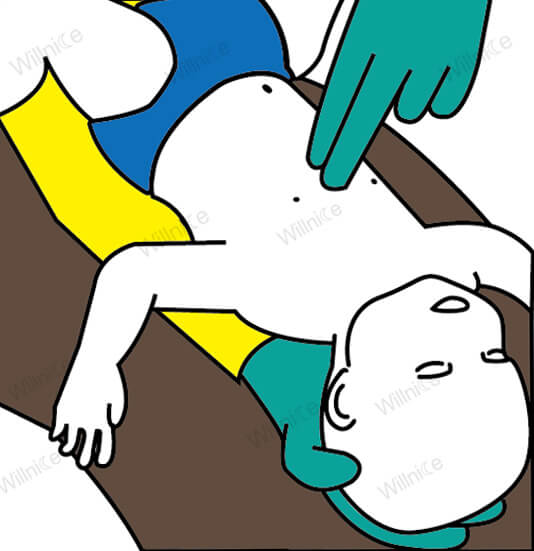
Step 5: Repeat and Alternate if Necessary
Repeat and alternate by giving 5 back blows and 5 chest thrusts. Continue this cycle until:
- The obstruction is removed.
- The infant can breathe, cough, or cry.
- The infant becomes unresponsive.
Conclusion
This ultimate guide has clearly demonstrated how many back slaps and chest thrusts to a responsive choking infant. It’s crucial to perform these actions with precision and care to effectively dislodge any obstruction and ensure the infant’s safety.
Always remember to seek medical help after the choking incident is resolved, even if the infant appears to have recovered, to ensure there are no hidden complications. Familiarizing yourself with these first aid techniques and practicing them can prepare you to act confidently in a choking emergency.


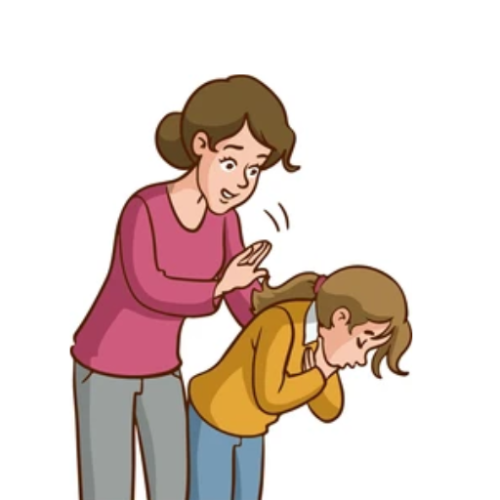


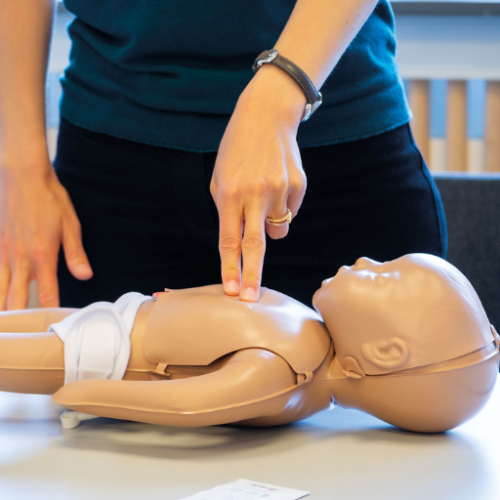


 Login with Google
Login with Google Login with Facebook
Login with Facebook